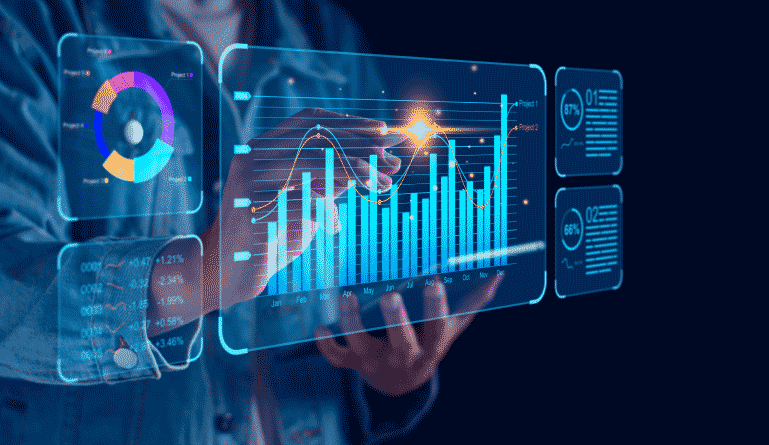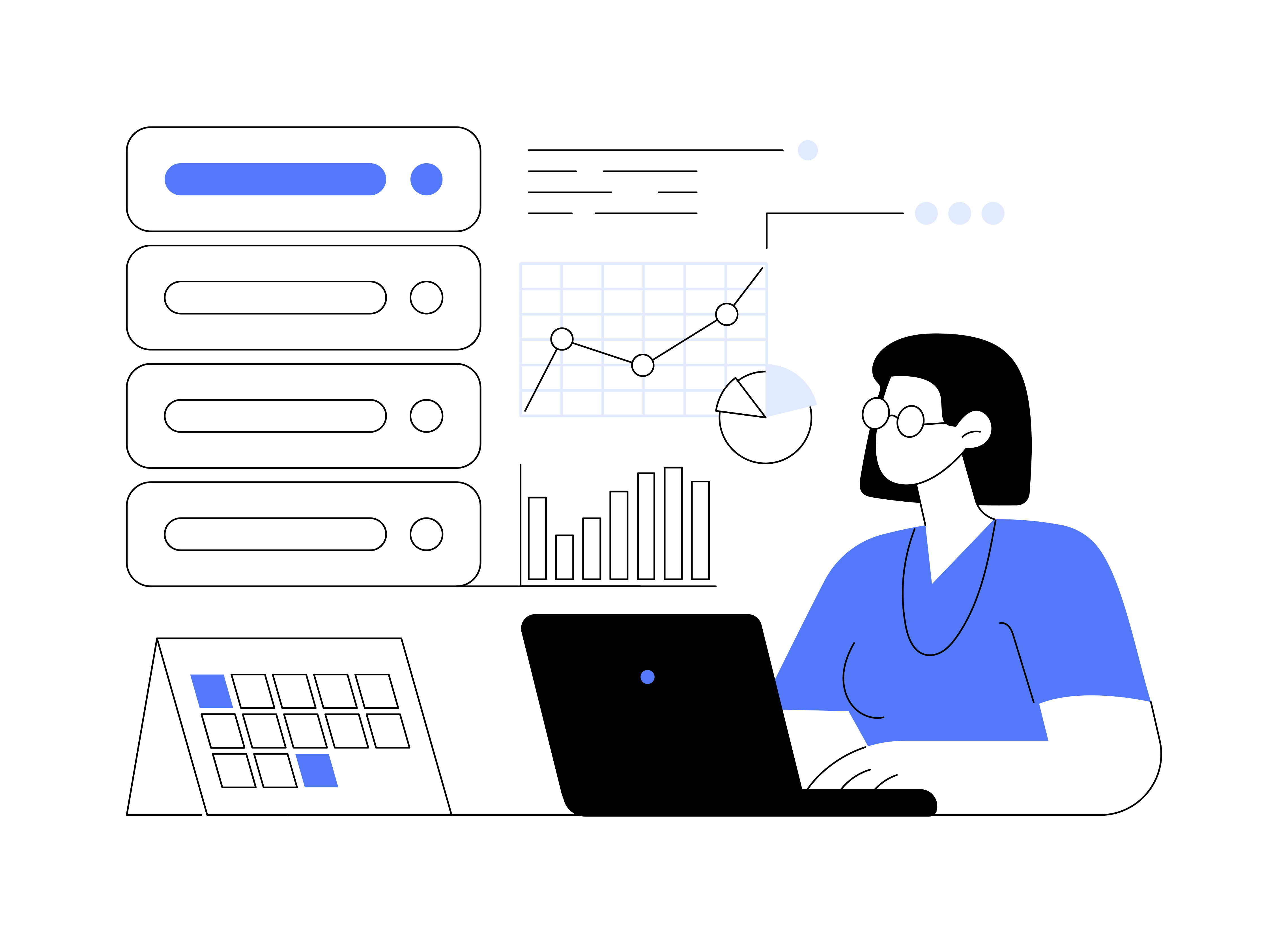Being data-driven is among the top priorities for CMOs, so it is important to understand the difference between leading vs. lagging indicators and how they drive ROI.
Gartner’s research shows that over half of marketing decisions (53%) are data-driven, yet data expertise remains among the top capability gaps for 61% of CMOs. Leading and lagging indicators can provide a more holistic understanding of marketing processes and their impact, both now and in the future.
What are Leading Indicators in Marketing?
Leading indicators measure ongoing processes and how they might influence future outcomes. To take a simple example, for someone looking to gain body mass, calorie intake is a leading indicator.
Marketing and sales enablement teams regularly measure a variety of KPIs related to ongoing processes, such as the daily active users (DAU) of a software platform or the total volume of traffic on an e-commerce website. Real-time dashboards on web analytics, social media, and product marketing platforms can give you deeper insights into your marketing leading indicators.
What are Lagging Indicators in Marketing?
Lagging indicators are metrics that measure the results of a process, decision, or activity by looking back at past events and quantifying their outcomes. Continuing our example, a person’s weight gain in pounds or kilograms is a lagging indicator.
Typically, marketing managers, business unit heads, and CMOs monitor lagging indicators at regular intervals to study their organization’s progress and if they are on the right track. Lagging indicators in marketing are often mapped in the form of historical trends to reveal how a company’s business output has changed over time. These indicators also play an essential role in funding an investment decision as they prove a company’s success.
Leading Indicators vs. Lagging Indicators: What’s the Difference?
The difference between leading and lagging indicators can be distilled into four factors: period, the analysis platform, the intended KPI user, and actionability.
1. Time period
Leading indicators are constrained to measuring only what’s happening here and now. They produce results for the current hour, day, week, month, or year. Lagging indicators, on the other hand, look at the past, typically a much more prolonged time block than leading indicators. They are measured every quarter, year, or five years.
2. The analysis platform
Most leading indicators are accessed through real-time dashboards updated as soon as new data comes in. The information can change dynamically, which is why they are closely monitored. In contrast, lagging indicators are captured in reports (which may also include critical leading indicators for the same period). They are auto-generated and preserved for future analysis.
3. The KPI user
Users of leading indicators include nearly every marketing team member, from content managers to search engine optimization (SEO) professionals. The sales team also uses them to monitor sales performance. In some companies, customer success teams rely on leading indicators to finetune their client interaction strategies.
In comparison, the typical user of a lagging indicator is someone in a decision-making role. Marketing managers, VP partners, CMOs, and chief customer officers rely heavily on marketing lagging indicators.
4. Actionability
Another difference between leading indicators vs. lagging indicators is how actionable they are. Since leading indicators are real-time, they are relatively easy to act on. For example, in our example, if the person’s calorie intake dips beyond a certain threshold, they can immediately switch to a different diet.
However, lagging indicators show the cumulative results of events that have taken place over time. Acting on lagging indicators is equally time and effort-intensive, typically necessitating deeper analysis, data correlation, and a process audit to arrive at the best way forward.
Critical Leading Indicators in Marketing
As part of daily marketing operations, you need to monitor several leading indicators. A few key examples include:
- The number of outreach emails sent: The total number shows you the audience you’re likely to reach. The wider your ambit, the higher the chances of engagement.
- DAU: For software companies or e-commerce apps, DAU is a crucial leading indicator measuring how many people are actively engaged with your product daily. Microsoft, for instance, measures DAU regularly and publicly releases the data every few months.
- New leads in the pipeline: The number of new leads generated and sent into the pipeline indicates future sales performance. A higher number typically indicates you’re likely to achieve more sales.
- Subscriber count on YouTube: For companies with an established YouTube presence, subscriber count is a leading indicator of future engagement and meaning potential.
- Free sign-up/demo numbers: If many prospects sign up for a free demo or newsletter, it shows growing interest in your offering, which may increase revenue.
Essential Lagging Indicators in Marketing to Monitor
Let us now look at a few examples of lagging indicators that marketing managers, BU heads, and C-level leaders must keep a watch on:
- Revenue growth: The increase in earnings from a particular product, service, or application is a must-measure KPI for any organization. It helps gauge long-term profitability and if your investments are resulting in ROI.
- Churn rate: The percentage of customers that drop off in a specific year or quarter or switch to a competitor is an essential lagging indicator. High churn shows that past decisions have not yielded the expected outcomes.
- Renewal rates/repeat purchases: When a customer renews their subscription to a service or app or makes a repeat purchase, it indicates high loyalty and engagement.
- Customer lifetime value: This measures the total revenues a single average customer may bring in during their lifetime through purchases, social engagement, and referrals.
- Customer service tickets: A high ticket volume means that customers frequently encounter post-purchase issues. It means there is a degree of dissatisfaction with the product and significant costs incurred in maintaining a contact center
Leading Indicators vs. Lagging Indicators: How Do They Complement Each Other?
One common pitfalls businesses make is focusing on one of the types of indicators to an overwhelming extent. A software company may prioritize DAU as the metric they measure and try to improve, while a manufacturer may only look at revenue growth. In reality, the two types of indicators are closely related, and as we explained in our example of calorie intake to body mass, one typically leads to another.
CMOs must approach leading indicators as predictors of future performance, which is extremely useful for forecasting, resource allocation, and budget projections. On the other hand, lagging indicators reflect the outcomes of past decisions, and by correlating them with leading indicators, it is possible to identify the strongest drivers of business success.
Conclusion: Useful Tools for KPI Measurement
Most tools in your MarTech stack will have robust data generation capabilities and will furnish valuable leading and lagging data. Essential tools include customer data platforms, customer relationship management (CRM) systems, and usage analytics solutions like web analytics, social media analytics, and attribution modeling. You can integrate this information with a business intelligence system to correlate business outcomes with their drivers and identify any misalignment you need to correct.





